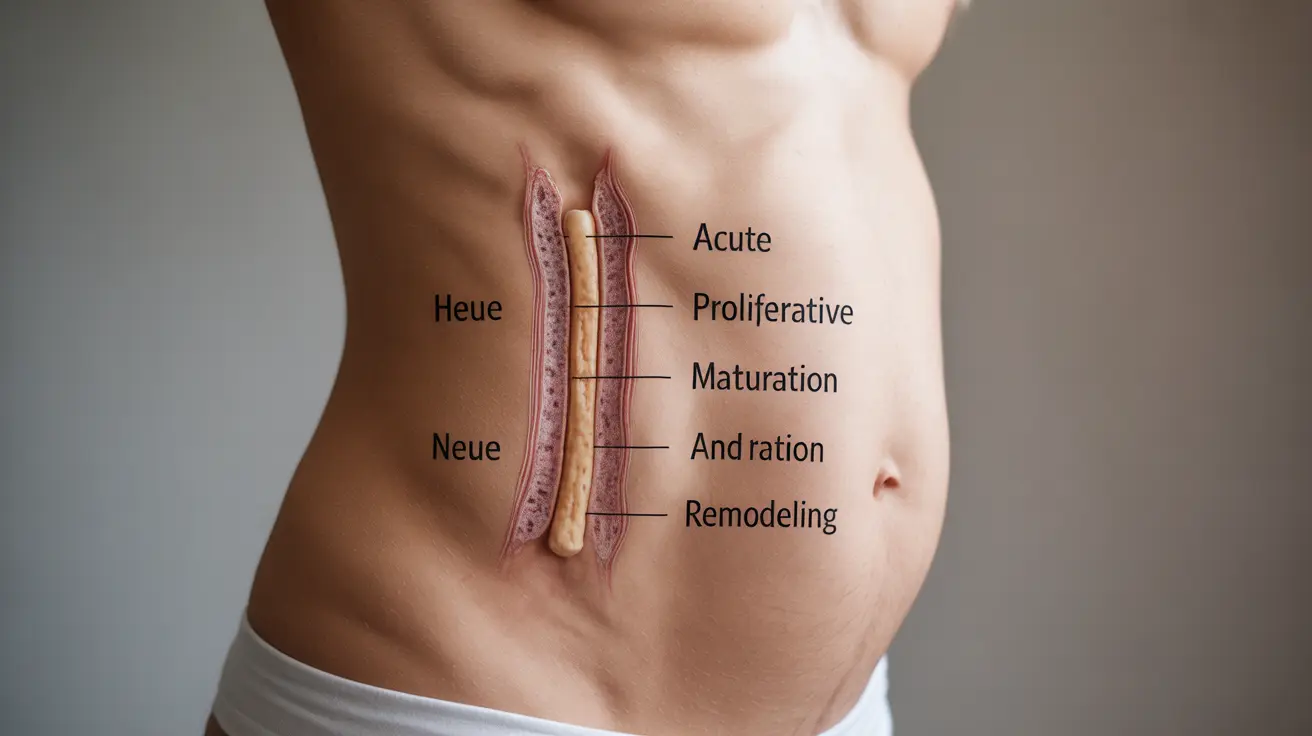A cesarean section (C-section) delivery results in a surgical scar that requires proper attention and care during the healing process. Whether you're preparing for a C-section or currently recovering from one, understanding how to care for your scar and what to expect during healing is essential for optimal recovery.
This comprehensive guide will walk you through everything you need to know about C-section scars, from different types of incisions to proper care techniques and potential complications to watch for.
Types of C-Section Incisions and Their Appearance
C-section incisions typically fall into two main categories, each affecting how the resulting scar will look:
Horizontal (Bikini Line) Incision
The most common type is the low transverse incision, also known as the bikini line cut. This horizontal incision is made just above the pubic hairline and typically results in a scar that's about 4-6 inches long. This type generally heals well and is less visible, making it the preferred choice for most surgeons.
Vertical (Classical) Incision
Less commonly used, the classical vertical incision runs from below the navel to just above the pubic bone. This type is typically reserved for emergency situations or specific medical circumstances. The resulting scar is more visible but may be necessary in certain situations.
The Healing Timeline
The healing process for a C-section scar occurs in several stages:
- Initial healing (first week): The incision begins closing
- Early recovery (2-4 weeks): Scar tissue forms
- Progressive healing (1-3 months): Scar becomes firmer
- Long-term fading (6-12 months): Scar lightens and softens
Essential Scar Care Guidelines
Proper care of your C-section scar can significantly impact its final appearance and your comfort during healing:
- Keep the incision area clean and dry
- Follow your healthcare provider's wound care instructions
- Wear loose, comfortable clothing that doesn't rub against the scar
- Avoid strenuous activities during initial healing
- Support your abdomen when coughing or laughing
Warning Signs to Watch For
While some discomfort is normal, certain symptoms warrant immediate medical attention:
- Increased redness or warmth around the incision
- Fever or chills
- Foul-smelling discharge
- Separation of the wound edges
- Severe pain or increasing pain
- Swelling that worsens after initial recovery
Scar Treatment Options
Several treatment options can help improve the appearance of your C-section scar:
- Silicone sheets or gels
- Scar massage (once healing is complete)
- Moisturizing creams
- Sun protection
- Professional treatments (if recommended by your healthcare provider)
Frequently Asked Questions
What are the different types of C-section incisions and how do they affect scar appearance? The two main types are horizontal (bikini line) and vertical (classical) incisions. Horizontal incisions typically result in less visible scars and are more common, while vertical incisions may be more noticeable but are necessary in certain medical situations.
How long does it typically take for a C-section scar to heal and fade? Initial healing takes about 6-8 weeks, but complete scar maturation can take 6-12 months. During this time, the scar typically changes from red to pink and eventually fades to a lighter color.
What are the best ways to care for a C-section scar to minimize its visibility? Keep the area clean and dry, use silicone-based scar treatments, protect from sun exposure, and follow your healthcare provider's specific care instructions. Gentle scar massage can also help once initial healing is complete.
What signs of infection or complications should I watch for around my C-section scar? Watch for increased redness, warmth, fever, foul-smelling discharge, separation of the wound edges, severe pain, or worsening swelling. Contact your healthcare provider immediately if you notice any of these symptoms.
Can scar massage or treatments like silicone sheets help reduce tightness and improve C-section scar healing? Yes, both scar massage and silicone sheets can be effective in improving scar appearance and reducing tightness. However, always wait until your healthcare provider confirms the incision has healed sufficiently before starting these treatments.




